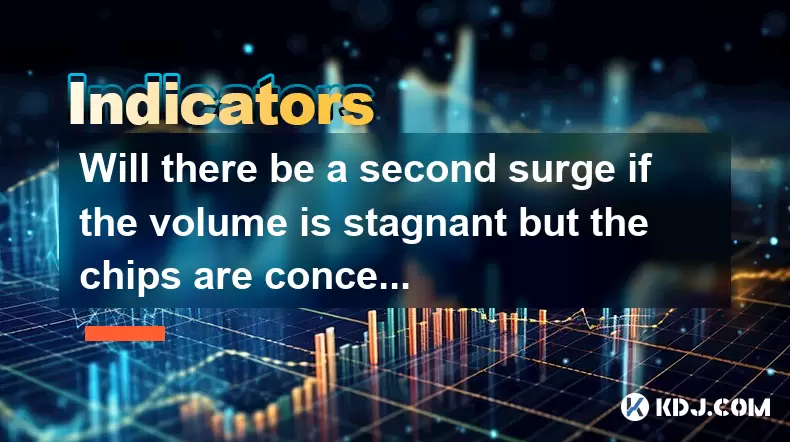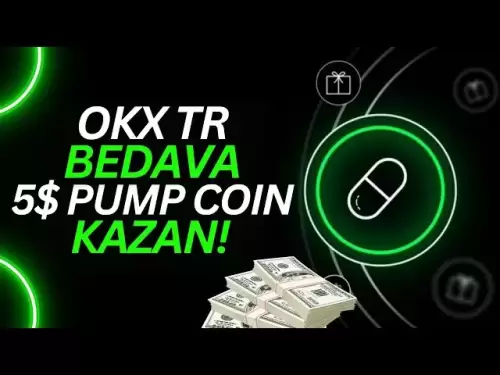-
 Bitcoin
Bitcoin $117400
-0.46% -
 Ethereum
Ethereum $3768
0.60% -
 XRP
XRP $3.551
2.09% -
 Tether USDt
Tether USDt $1.000
0.00% -
 Solana
Solana $203.2
11.30% -
 BNB
BNB $770.9
1.92% -
 USDC
USDC $0.9999
0.01% -
 Dogecoin
Dogecoin $0.2709
-0.02% -
 Cardano
Cardano $0.9024
4.49% -
 TRON
TRON $0.3139
0.60% -
 Hyperliquid
Hyperliquid $45.60
-1.41% -
 Stellar
Stellar $0.4730
-1.34% -
 Sui
Sui $4.025
2.15% -
 Chainlink
Chainlink $19.79
2.19% -
 Hedera
Hedera $0.2724
-2.39% -
 Avalanche
Avalanche $25.93
3.05% -
 Bitcoin Cash
Bitcoin Cash $524.0
-1.83% -
 Shiba Inu
Shiba Inu $0.00001558
0.50% -
 Litecoin
Litecoin $116.7
-0.30% -
 UNUS SED LEO
UNUS SED LEO $8.996
0.00% -
 Toncoin
Toncoin $3.334
1.83% -
 Polkadot
Polkadot $4.506
0.34% -
 Uniswap
Uniswap $10.99
4.83% -
 Ethena USDe
Ethena USDe $1.001
0.03% -
 Pepe
Pepe $0.00001461
3.17% -
 Monero
Monero $320.3
-1.01% -
 Bitget Token
Bitget Token $4.935
0.36% -
 Dai
Dai $0.9998
0.00% -
 Aave
Aave $322.4
-1.25% -
 Bittensor
Bittensor $455.6
9.33%
Will there be a second surge if the volume is stagnant but the chips are concentrated?
Despite stagnant volume, concentrated chip accumulation by whales suggests a potential second price surge as hidden demand builds on-chain.
Jun 29, 2025 at 08:00 pm

Understanding the Relationship Between Volume, Chips, and Price Surges
In cryptocurrency markets, volume and on-chain metrics like chip concentration are often analyzed to predict potential price movements. When traders ask whether there will be a second surge despite stagnant volume but concentrated chips, they're essentially trying to understand if accumulation by large holders (whales) can drive another rally even without increased trading activity.
Volume typically reflects market participation. A high volume usually indicates strong interest or selling pressure. However, in some cases, a lack of visible volume doesn't necessarily mean a lack of underlying accumulation or distribution.
What Does It Mean for Chips to Be Concentrated?
The term "chips" is often used colloquially in crypto to refer to tokens or coins held by major players or institutional investors. When these holdings become more concentrated — meaning fewer addresses control larger portions of the supply — it could signal that smart money or whales are accumulating.
This phenomenon can be tracked using on-chain analytics platforms like Glassnode, Santiment, or Etherscan, which show distribution trends over time. For instance, a drop in the number of small holder addresses combined with an increase in medium or large holder balances may suggest consolidation before a move.
Why Stagnant Volume Doesn't Always Mean Market Weakness
Stagnant volume might seem discouraging at first glance, especially when traders expect rising prices to be accompanied by higher trade volumes. However, in certain market conditions, low volume can coexist with strong fundamentals or hidden accumulation.
For example, during accumulation phases, whales may buy up large quantities of tokens without significantly affecting the price. This behavior can occur through over-the-counter (OTC) trades, private transactions, or direct purchases from smaller holders who are exiting positions quietly.
- These transactions don’t always register as spikes in public exchange volume.
- As a result, the blockchain shows increasing concentration while exchanges reflect low volume.
This divergence suggests that the market may be building energy beneath the surface, potentially setting the stage for a sudden upward movement once selling pressure diminishes.
Historical Precedents: Past Cycles and Hidden Accumulation
Looking back at previous bull runs, there have been instances where price surges occurred after prolonged periods of low volume and increasing centralization of holdings. One such case was Bitcoin’s buildup phase in late 2018 and early 2019, where whale accumulation preceded the 2020 rally.
During those times:
- Exchange volume remained subdued.
- On-chain metrics showed decreasing liquidity in retail hands.
- Large entities began showing increased balance growth.
These patterns were not immediately obvious to casual observers but were detectable via on-chain analysis tools. The eventual breakout came after months of silent accumulation, proving that a second surge can indeed happen even under seemingly dormant market conditions.
How to Interpret Whale Behavior Using On-Chain Tools
To assess whether a second surge is likely, one must look beyond exchange data and dive into on-chain analytics. Here's how you can do it step-by-step:
- Use platforms like Glassnode Studio to check "Entity-Modelled Supply Distribution" charts.
- Monitor changes in the percentage of supply held by entities with 1K–10K coins.
- Track "Large Transactions Count" to see if whale activity is increasing.
- Observe "Exchange Inflows/Outflows" to determine whether whales are moving funds to or from exchanges.
- Compare this data with historical patterns during past accumulation phases.
If whale inflows are decreasing while their on-chain balances are growing, it may indicate that they’re accumulating quietly without triggering sell-offs or panic. This kind of stealth accumulation often precedes a significant price move.
Key Questions to Ask Before Anticipating a Second Surge
Before concluding that a second surge is imminent, consider asking the following questions:
- Is the decline in volume due to reduced retail participation or deliberate off-exchange accumulation?
- Are whale balances increasing across multiple layers (e.g., wallet holdings, smart contracts)?
- Has network value relative to realized cap (NV/RV) started trending upward?
- Are miner outflows declining, suggesting less selling pressure?
Answering these can provide clarity on whether the current stagnation is a sign of weakness or a consolidation phase preparing for a stronger move.
Frequently Asked Questions
Q: Can a cryptocurrency surge without any increase in exchange volume?
Yes, especially if large holders are acquiring assets off-exchange. OTC deals and internal transfers may not impact visible volume but can still shift supply dynamics significantly.
Q: How do I differentiate between healthy accumulation and whale dumping disguised as consolidation?
Look at exchange inflows. If whales are sending coins to exchanges, it may signal an upcoming dump. Conversely, if they're moving funds away from exchanges or holding steady, it supports accumulation.
Q: What on-chain indicators best confirm chip concentration?
Key indicators include entity supply distribution, large transaction counts, and whale balance trends. Tools like Glassnode and Santiment offer visualizations for these metrics.
Q: Should I wait for volume to pick up before entering a position?
Not necessarily. If on-chain signals point to strong accumulation and declining retail supply, waiting for volume confirmation might cause you to miss the early stages of a rally.
Disclaimer:info@kdj.com
The information provided is not trading advice. kdj.com does not assume any responsibility for any investments made based on the information provided in this article. Cryptocurrencies are highly volatile and it is highly recommended that you invest with caution after thorough research!
If you believe that the content used on this website infringes your copyright, please contact us immediately (info@kdj.com) and we will delete it promptly.
- Bitcoin, Trump Media, and a Stock Boost: A New York Minute on Crypto & Politics
- 2025-07-22 15:30:12
- Solana Ecosystem Tokens Surge: Riding the Wave to New Highs?
- 2025-07-22 15:30:12
- Bitcoin, Render Token, and Resistance Levels: A New Yorker's Take
- 2025-07-22 15:50:12
- MoonBull's Whitelist Mania: Your Last Shot at 100x Crypto Gains?
- 2025-07-22 10:30:12
- Meme Coins in 2025: Explosive Gains or Fading Fad?
- 2025-07-22 10:30:12
- Kim Keon-hee Crypto Probe: Scandal Rocks South Korea's Political Scene
- 2025-07-22 10:50:12
Related knowledge

Advanced RSI strategies for crypto
Jul 13,2025 at 11:01am
Understanding the Basics of RSI in Cryptocurrency TradingThe Relative Strength Index (RSI) is a momentum oscillator used to measure the speed and chan...

Crypto RSI for day trading
Jul 12,2025 at 11:14am
Understanding RSI in the Context of Cryptocurrency TradingThe Relative Strength Index (RSI) is a momentum oscillator used to measure the speed and cha...

Crypto RSI for scalping
Jul 12,2025 at 11:00pm
Understanding RSI in the Context of Crypto TradingThe Relative Strength Index (RSI) is a momentum oscillator widely used by traders to measure the spe...

What does an RSI of 30 mean in crypto
Jul 15,2025 at 07:07pm
Understanding RSI in Cryptocurrency TradingRelative Strength Index (RSI) is a momentum oscillator widely used in cryptocurrency trading to measure the...

What does an RSI of 70 mean in crypto
Jul 13,2025 at 06:07pm
Understanding the RSI Indicator in Cryptocurrency TradingThe Relative Strength Index (RSI) is a widely used technical analysis tool that helps traders...

Does RSI work in a bear market for crypto
Jul 16,2025 at 01:36pm
Understanding RSI in Cryptocurrency TradingThe Relative Strength Index (RSI) is a momentum oscillator used by traders to measure the speed and change ...

Advanced RSI strategies for crypto
Jul 13,2025 at 11:01am
Understanding the Basics of RSI in Cryptocurrency TradingThe Relative Strength Index (RSI) is a momentum oscillator used to measure the speed and chan...

Crypto RSI for day trading
Jul 12,2025 at 11:14am
Understanding RSI in the Context of Cryptocurrency TradingThe Relative Strength Index (RSI) is a momentum oscillator used to measure the speed and cha...

Crypto RSI for scalping
Jul 12,2025 at 11:00pm
Understanding RSI in the Context of Crypto TradingThe Relative Strength Index (RSI) is a momentum oscillator widely used by traders to measure the spe...

What does an RSI of 30 mean in crypto
Jul 15,2025 at 07:07pm
Understanding RSI in Cryptocurrency TradingRelative Strength Index (RSI) is a momentum oscillator widely used in cryptocurrency trading to measure the...

What does an RSI of 70 mean in crypto
Jul 13,2025 at 06:07pm
Understanding the RSI Indicator in Cryptocurrency TradingThe Relative Strength Index (RSI) is a widely used technical analysis tool that helps traders...

Does RSI work in a bear market for crypto
Jul 16,2025 at 01:36pm
Understanding RSI in Cryptocurrency TradingThe Relative Strength Index (RSI) is a momentum oscillator used by traders to measure the speed and change ...
See all articles

























































































